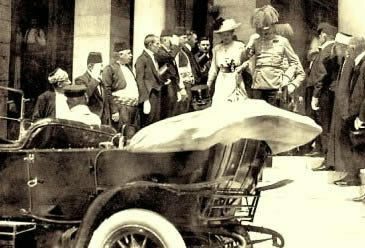THE Battle of Tannenberg was one of the most important clashes between the troops of the German and Russian armies at the beginning of the First World War. Taking place in the second half of August 1914, the Battle of Tannenberg caused Russian troops to retreat after an attempted invasion of Germany across the East Prussian border. More than 300,000 soldiers took part in the battle, with the Russians outnumbering.
The aim of the Russians in battle was to attack the German eastern front and thus help the French on the western front, as it would force the Germans to deploy their troops to face the Russians. Initially two Russian army corps won some victories, commanded by Generals Rennenkampf and Samsonov.
However, German officers took advantage of crucial Russian failures to contain the offensive. One was the interception of uncoded messages exchanged between the two Russian generals, informing them that the troops commanded by Rennenkampf would contain their advance. With this, German troops were able to attack the forces led by Samsonov. The action was further facilitated by the fact that the two corps of the Russian army were about 80 kilometers apart from each other, near the Masurian Lakes, which made mutual assistance difficult.
Furthermore, the Germans knew of the enmity between the two Russian generals, a sentiment that would contribute to delaying support if one of the army corps commanded by one of them were attacked. These two situations led officers to work with calculated risk.
The German attack occurred through the attack of six divisions against the left flank of the troops commanded by General Samsonov, with the rest of the troops attacking the right flank. General Rennenkampf would initially be attacked by only one infantry corps. The action was facilitated by the lack of communication between the two Russian generals.
Do not stop now... There's more after the advertising ;)
The attacks caused Samsonov's forces to retreat inordinately, due to the lack of communication and the mobility difficulties resulting from the appalling conditions of the roads and railways in the region.
A Russian counterattack was attempted, but the continuation of the German advance drove Russian troops into dense forest to escape the onslaught. With the loss of unity among the troops, the Germans managed to take more than 90,000 prisoners, still annihilating half of the second Russian army, commanded by Samsonov. This one, as a result of the defeat, committed suicide.
In September, the Germans contained a slow advance by Rennenkampf. Despite the defeat, the Russians managed to get the Germans to divert attention from fighting France on the western front, facilitating the French counterattack in the Battle of the Marne.
Although the battle did not take place in Tannennberg, the name was adopted because of a defeat suffered by the Teutonic Knights in 1410 in clashes with Poles and Lithuanians. The aim was to create a sort of compensation for the defeat of the past and to instill German nationalist sentiment.
By Tales Pinto
Master in History
Would you like to reference this text in a school or academic work? Look:
PINTO, Tales dos Santos. "Battle of Tannenberg, 1914"; Brazil School. Available in: https://brasilescola.uol.com.br/guerras/batalha-tannenberg-1914.htm. Accessed on June 28, 2021.


